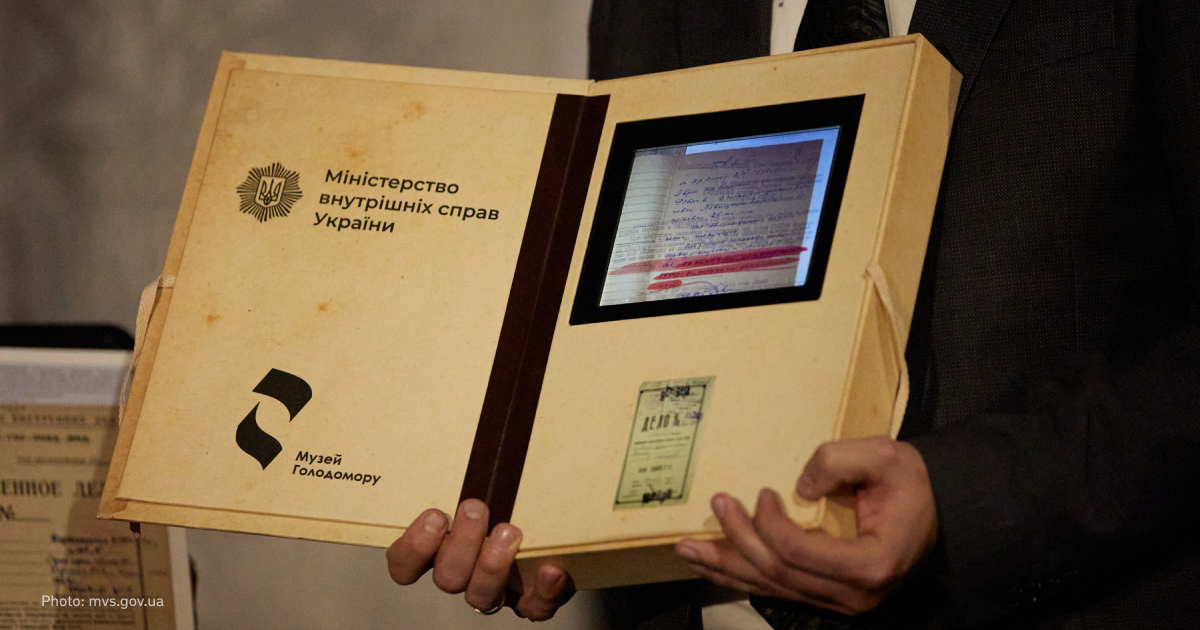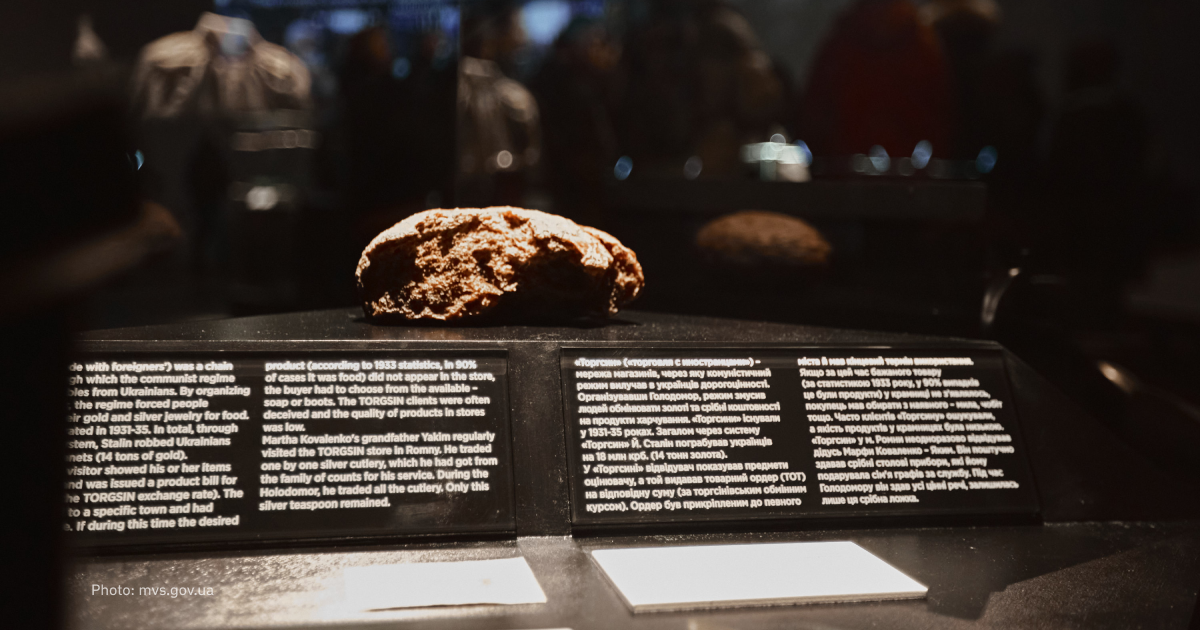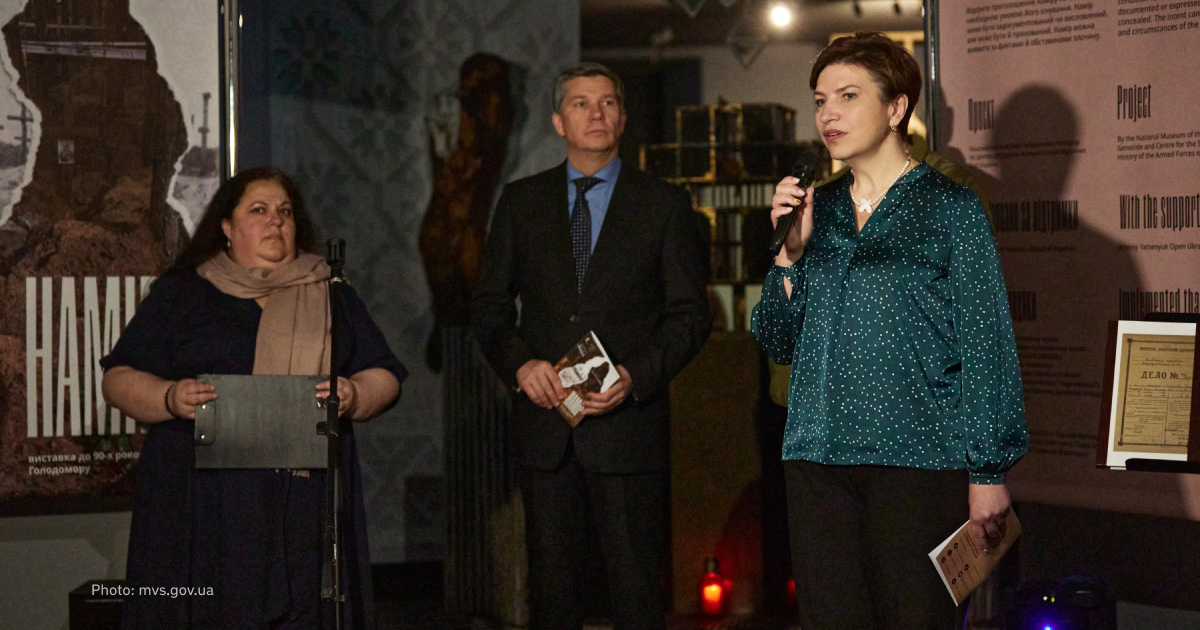Ministry of Internal Affairs hands over more than one thousand archival files of 1932-1933 genocide to Holodomor Museum

On the Day of Remembrance of the Holodomor Victims of 1932-33, the Ministry of Internal Affairs handed over 1,022 files of that period to the National Museum of the Holodomor-Genocide.
The Ministry of Internal Affairs press service reports.
Most of the cases relate to cannibalism in March-June 1933, which coincides with the peak mortality rate among Ukrainians. The testimonies of genocide survivors have been digitised. The memoirs say, in particular, that "in the village of Kyrnychky, 34 people died due to 'great difficulties with food', most of them children and the elderly." There is also a fragment in which an unnamed girl remained a complete orphan due to starvation - her father, mother, two brothers and sister died when she was only 18.
The Ministry of Internal Affairs noted that in these cases, the defendant's questionnaire specifically included a box for "citizenship and nationality", and almost all defendants were Ukrainians.
These 1,022 cases provide an opportunity for historians to examine the impact of the communist regime, which created an artificial famine that drove Ukrainians to a state of despair and beyond the limits of human morality. The motivations for cannibalism were dictated by the doom of the people.
We can say that the famine affected the human psyche and consciousness. Therefore, scientists still have to study these archival files from the point of view of medicine, psychology, sociology, economic geography and other sciences,
said Inna Yashchuk, State Secretary of the Ministry of Internal Affairs of Ukraine.




